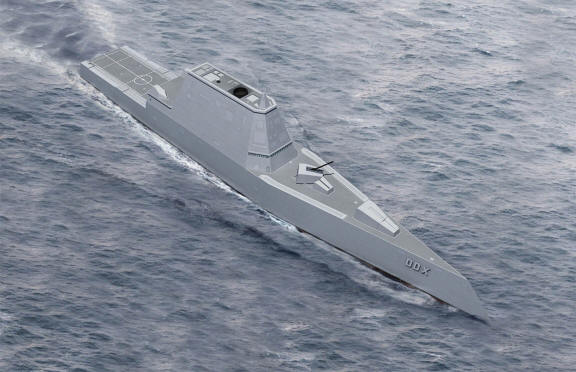Prior to its leading role in the development of an Autonomic Fire Suppression System (AFSS) Control Module during the EDM effort, Fairmount Automation developed a predecessor prototype system that was demonstrated during live-fire testing on ex-USS PETERSON. The ex-USS PETERSON Weapons Effects Test (WET) consisted of three test events that were completed in February 2004 and were designed to demonstrate the fully automatic (unmanned) response of the AFSS to a weapon hit. During this series of tests, the firefighting and automation systems detected and isolated damage inflicted upon the shipboard firemain and watermist systems, activated the firefighting systems to contain and suppress the fires in the primary damage area, and monitored the progress of the fire and the damage control response.
The Fairmount Automation AFSS design that was installed on ex-USS PETERSON, featured a survivable piping system with two sets of smart pumps that fed a vertically-offset firemain loop. The firemain redundantly supplied arrays of overhead and bulkhead-mounted (sidewall) water mist nozzles via smart valve devices installed throughout the piping system. The distributed intelligent devices (i.e., pumps, valves, sensors, etc.) communicated with one another over a distributed control network (DCN) and took control actions based on locally sensed data as well as information obtained over the DCN.
Fairmount Automation developed the embedded software for the device level control system, as well as the high-level software modules to display, monitor and log system and control system data. The embedded software application was designed to:
- Detect and autonomously isolate AFSS piping system damage based on information obtained from embedded sensors and/or from other smart valve devices
- Detect shipboard fires using information obtained from remote temperature sensors
- Autonomously activate portions of the AFSS piping system to control shipboard fires
- Perform self-diagnostics to evaluate the status of the actuator and the health of onboard and remote sensor
- Respond to commands issued by the AFSS High-Level Software Module (HLSM)
- Periodically report its own status to the AFSS HLSM and other smart valves
- Resume operation following a power-up or reset event
The high-level software modules were designed to:
- Provide the capability to display, on a human computer interface (HCI), AFSS system integrity and issue tactical commands for fighting weapon induced casualties
- Monitor the health of AFSS devices such as smart pumps and valves, and fire detection sensors
- Log system and control system data during live-fire testing
The ex-USS PETERSON WET was conducted to test the response of the AFSS design to a wartime damage scenario, and to demonstrate that the AFSS could improve ship survivability by providing an automated damage control response to isolate system damage and control shipboard fires resulting from a weapon hit. The hope was that the AFSS would contain and control weapon-induced fires by establishing fire boundaries and maintaining the integrity of the fire suppression system. During the WET, the AFSS smart valves detected and automatically isolated system damage necessary to restore operation of undamaged sections of the piping system shortly after weapon detonation.
The ex-USS PETERSON WET demonstration was witnessed and viewed by U.S. Navy representatives, the DD(X) Design Agent, and other key members of the naval community, and was unanimously declared an unprecedented success. Moreover, Fairmount Automation delivered the prototype system on time—within extremely aggressive scheduling targets—and on budget—within tight fiscal constraints.

